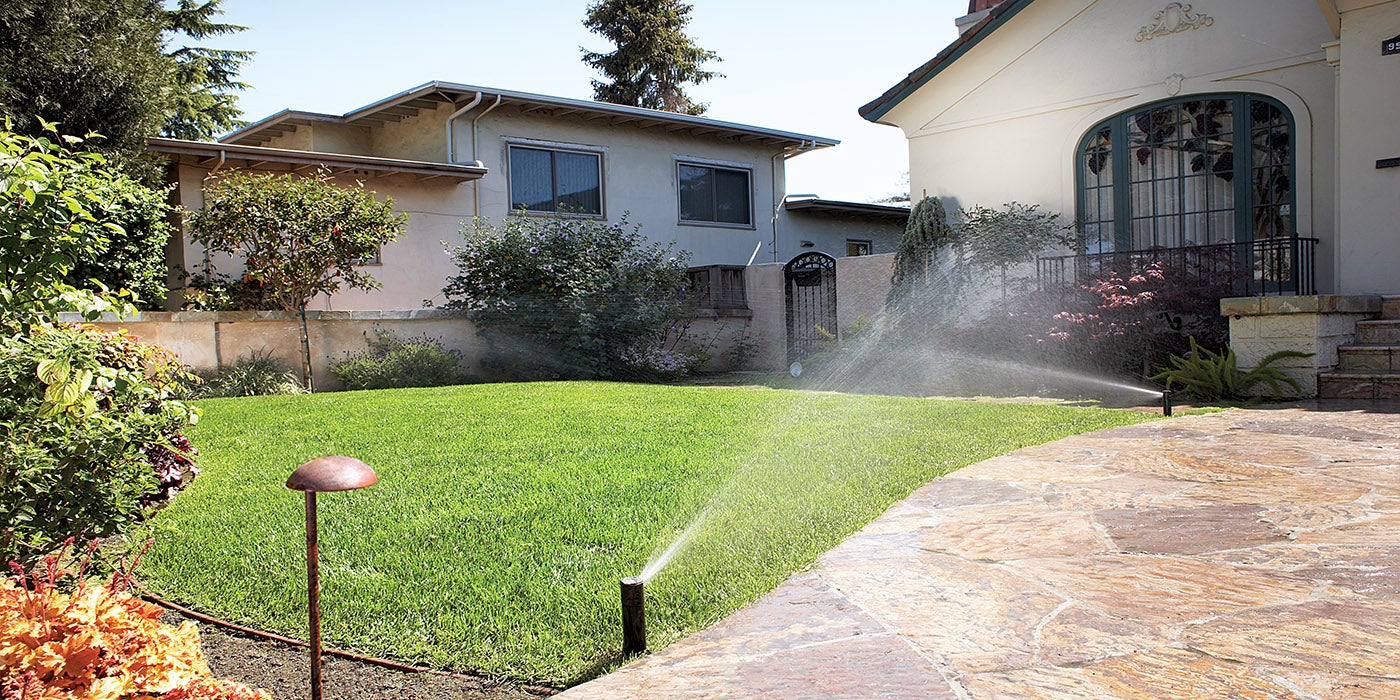6 Tips to Water Your Lawn Responsibly

A lush green lawn is the envy of the neighborhood. Even if you live in the desert, having a grass lawn is not necessarily a bad thing – if you water your lawn responsibly. Lawn irrigation is an important home maintenance task that should be done responsibly to preserve natural resources and keep your lawn looking healthy. In this article, we will explore the benefits of lawn irrigation and offer some tips for responsible irrigation.
Why irrigation is good for the environment
Responsible irrigation is an environmentally friendly way to water your lawn. Good watering practices can save money on your water bill, conserve resources, and help keep your lawn looking healthy and lush all season long.
In addition, irrigation can also help improve the environment. By conserving water, lawn irrigation can reduce stress on waterways and reduce storm runoff that can carry pollutants and soil erosion into waterways.
Properly irrigated lawns also need less fertilizer, which can pollute groundwater and surface waters, and are more resistant to pests and diseases, reducing the need for pesticides and herbicides.
Here are some tips for how to water your lawn responsibly:
1. Invest in a good irrigation system
Manual sprinklers, such as oscillating or impact sprinklers, can be fine for occasional use on small lawns but can produce inconsistent results. If you forget to water one day or leave a sprinkler in one spot for too long, you may end up with patches of your lawn that are under- or over-watered.
An automatic sprinkler system waters your lawn evenly and efficiently, which keeps your grass looking its best and saves you money in the long run. The timer automatically provides just the right amount of water for precisely the right amount of time and at the right interval. A smart controller, like the ARC Series WiFi Smart Controller from Rain Bird event connects to the Internet to check your local weather and prevents watering if there's rain in the forecast. And with the corresponding mobile app, you can monitor your entire sprinkler system from your phone.
2. Plan your lawn irrigation
As the saying goes, "an ounce of prevention is worth a pound of cure." Take the time to plan your lawn irrigation system so that it waters your lawn evenly and effectively. Consider what are the best watering devices to include in your landscape design, then determine where to place sprinkler heads for the best coverage, and make sure your sprinkler controller is properly calibrated so that it waters your lawn for the correct amount of time.
HOMEOWNER TIP: Have a Rain Bird pro design a complete irrigation plan for your lawn. Try our Homeowner Sprinkler Design Service to create your personalized plan with just a few simple steps.
3. Water your lawn in the early morning or evening
During the hottest part of the day, most of the water will evaporate before it can soak into the ground. Watering during cooler and calmer mornings or evenings will help minimize evaporation and save water. The air is also calmer at these times of day, reducing the amount of water that could be blown away by summer breezes.
4. Use pressure regulating spray heads
Varying water pressures and windy conditions impact the flow rate and throw distance of common sprinkler heads. This can cause uneven watering and brown spots and waste as much as half of the water you use to irrigate your lawn. Pressure regulated spray (PRS) heads maintain a consistent flow rate regardless of the water pressure, which helps conserve water by reducing misting and fogging caused by high pressure and evaporation from wind. Be sure to check whether PRS watering systems are required in your state. Rain Bird PRS spray heads can save up to 106,000 gallons of water per year and comply with state guidelines in California, Washington, Colorado, Vermont, Hawaii, Washington D.C., Massachusetts, Rhode Island, Maine, Oregon, and New Jersey.
5. Watch the weather
If it's raining or will rain soon, let Mother Nature water your lawn for you. And irrigating during freezing conditions can damage your irrigation system and potentially your lawn. Rain and freeze sensors can reduce water waste and prevent damage to your landscaping. These devices stop irrigation systems from running when it rains or when the temperature approaches freezing. Ultimately, this will help conserve water and make your irrigation system last longer.
6. Use the cycle and soak method
The cycle and soak method of watering your lawn can reduce or eliminate runoff. This method of irrigation involves watering for brief intermittent periods rather than one long watering cycle, allowing water to soak into the soil between cycles.

- The first cycle will break the surface tension and saturates the topsoil.
- The second cycle penetrates the soil more efficiently and deeply after the first cycle to allow water to reach the roots of the plants.
- A third, and sometimes a fourth cycle, is beneficial when watering a sloped landscape or if runoff occurs after the sprinklers run for just a few minutes.
For example: if you have determined you need to run a sprinkler for 12 minutes, schedule your controller to run 2 times for 6 minutes each cycle, or 3 cycles for 4 minutes each, allowing 30 to 60 minutes between each watering cycle.
Irrigation is an important part of lawn maintenance, and there are many ways to water your lawn responsibly. And with summer temperatures on the rise, it's more important than ever to make sure your lawn gets the water it needs. These responsible lawn watering tips will help keep your grass looking green and healthy while preserving the environment.
